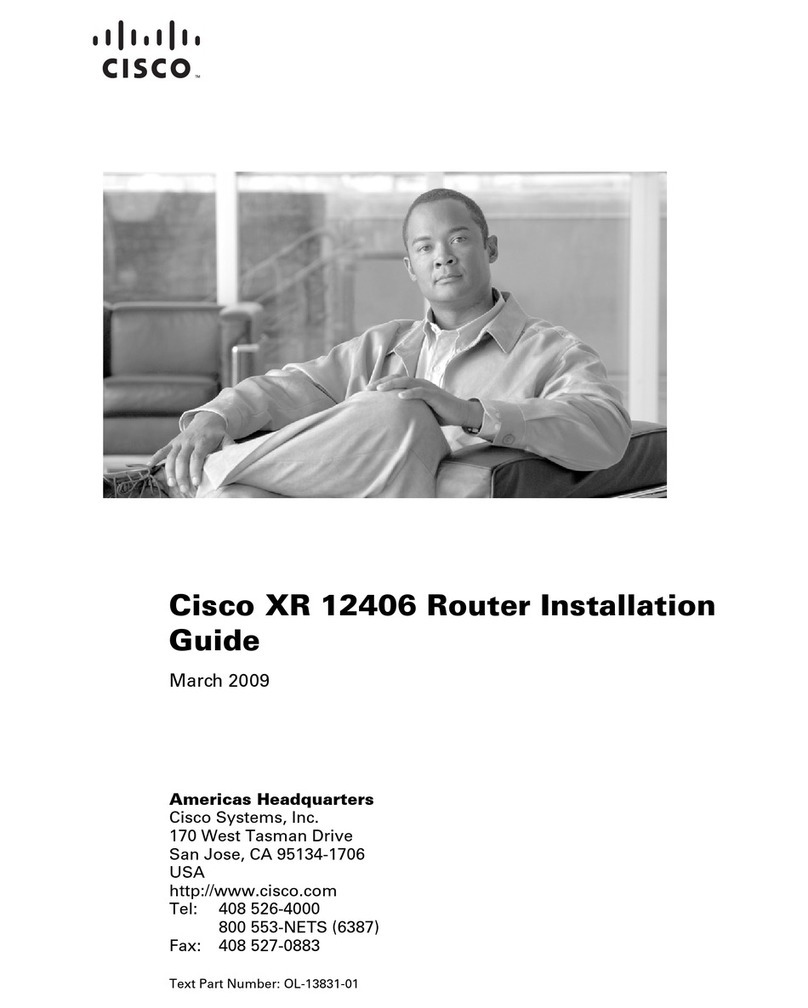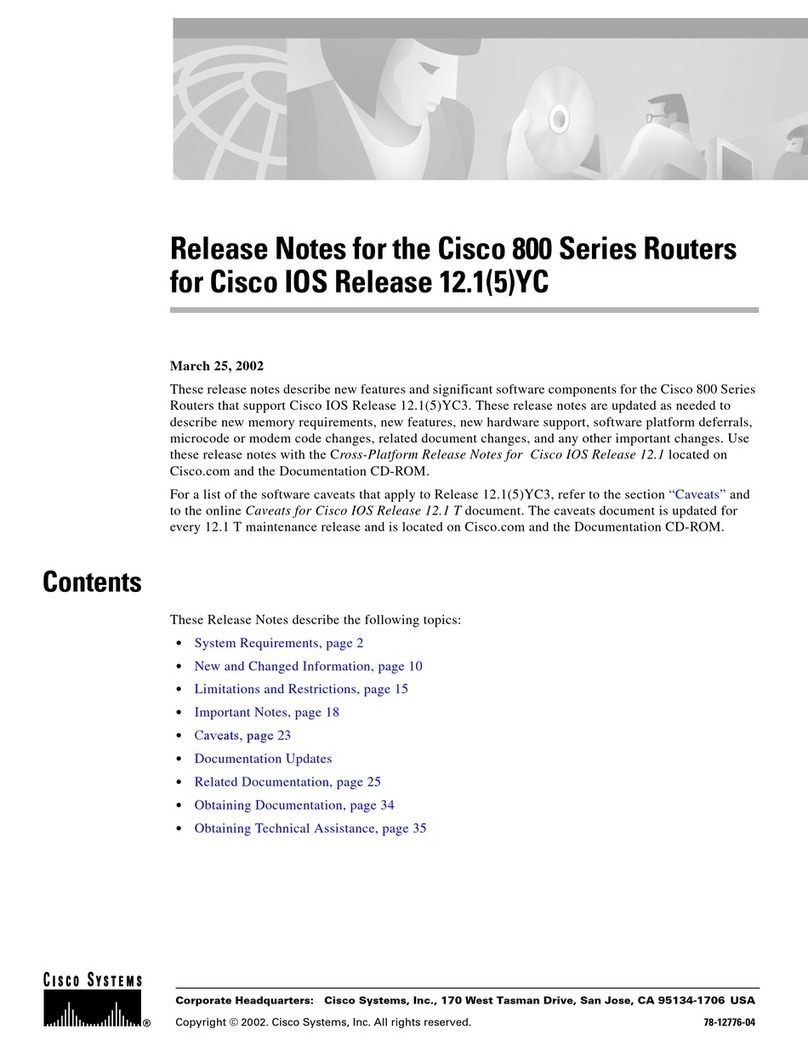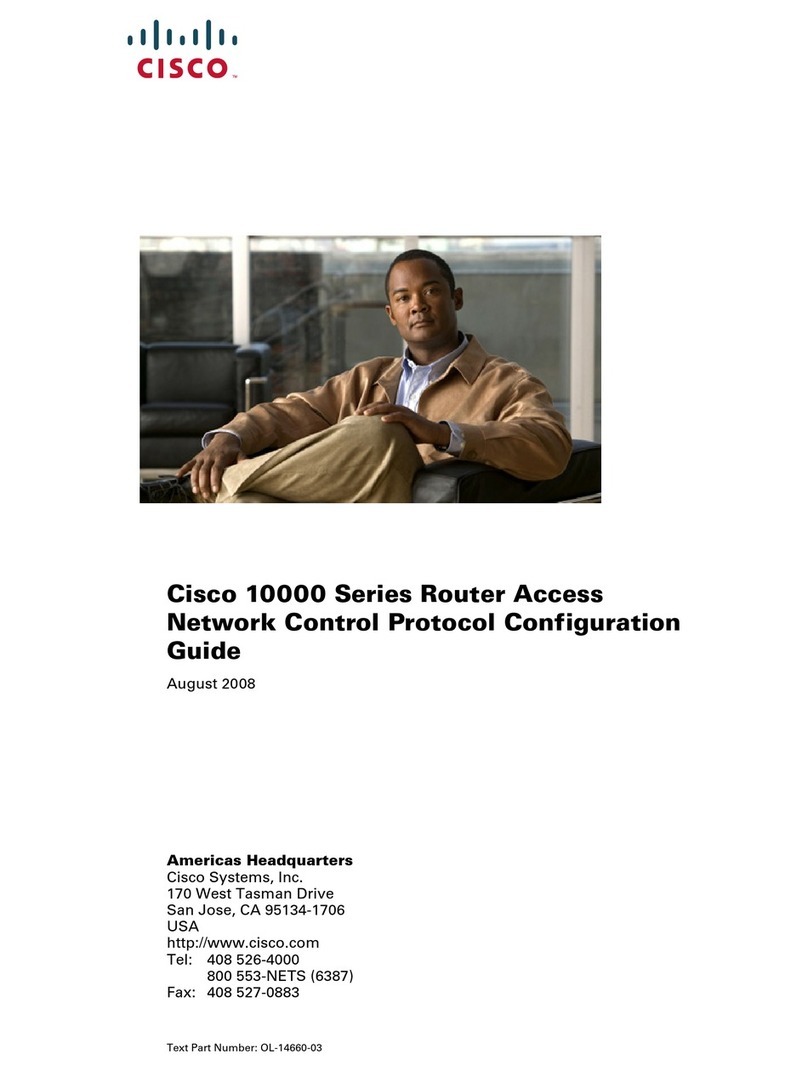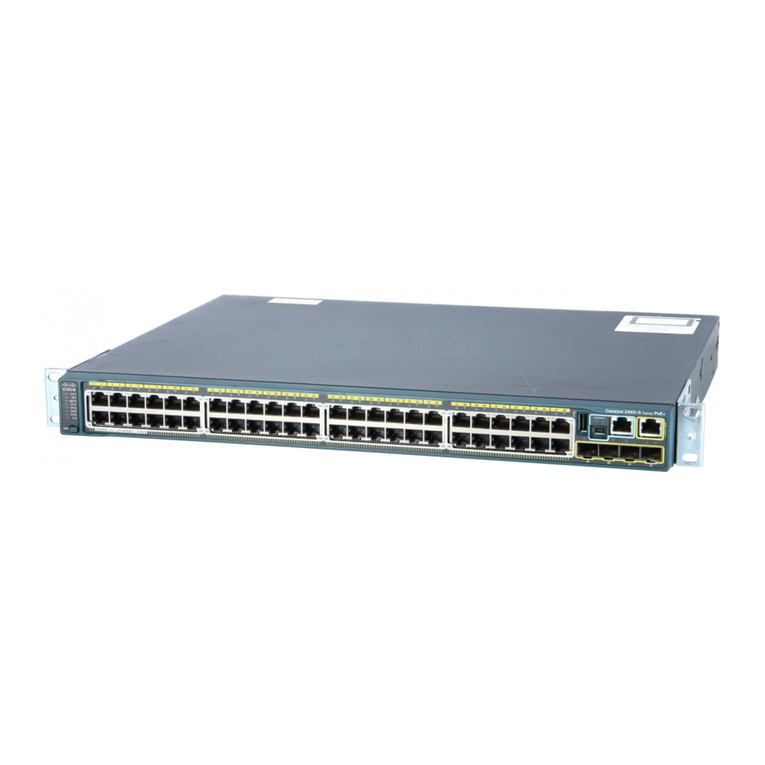Cisco IAD2431-1T1E1 Installation guide
Other Cisco Network Router manuals
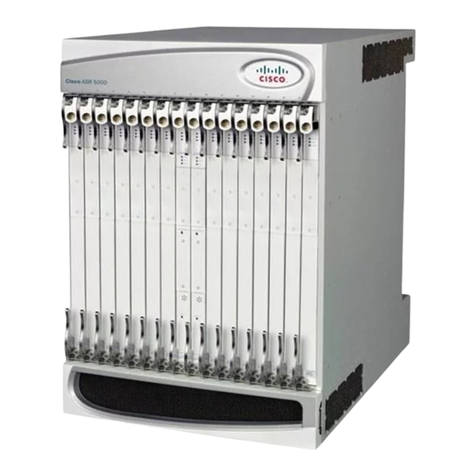
Cisco
Cisco ASR 5000 User manual
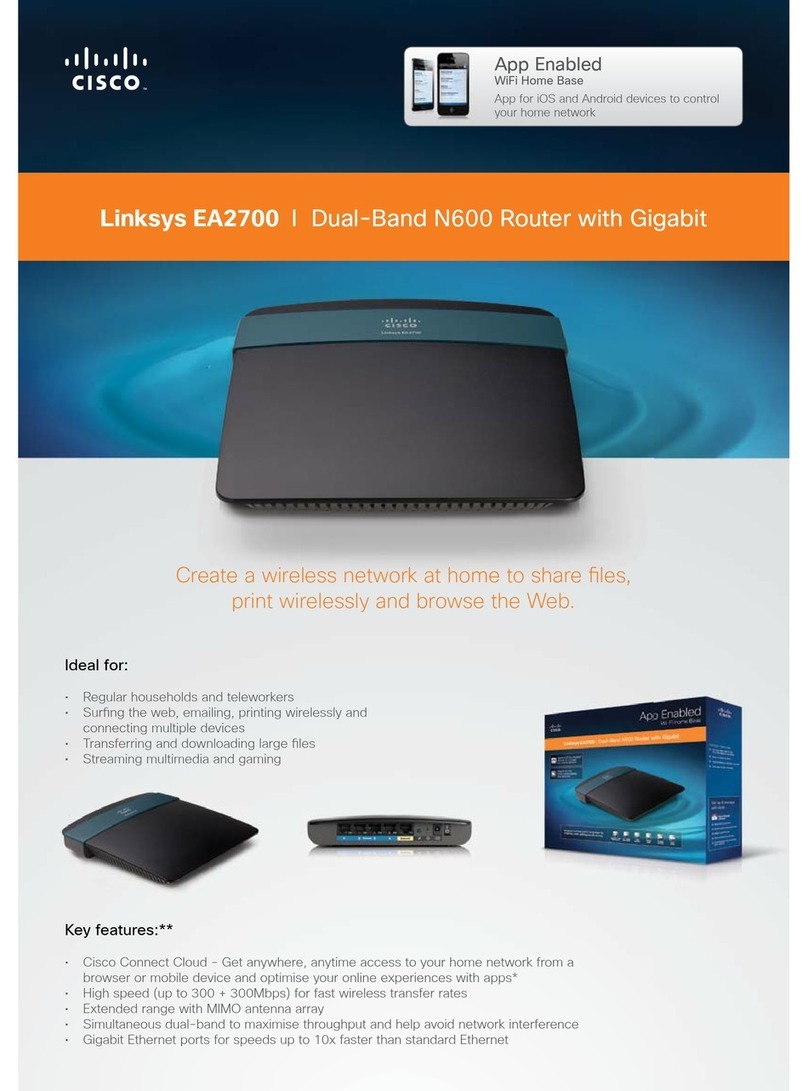
Cisco
Cisco Linksys EA2700 User manual
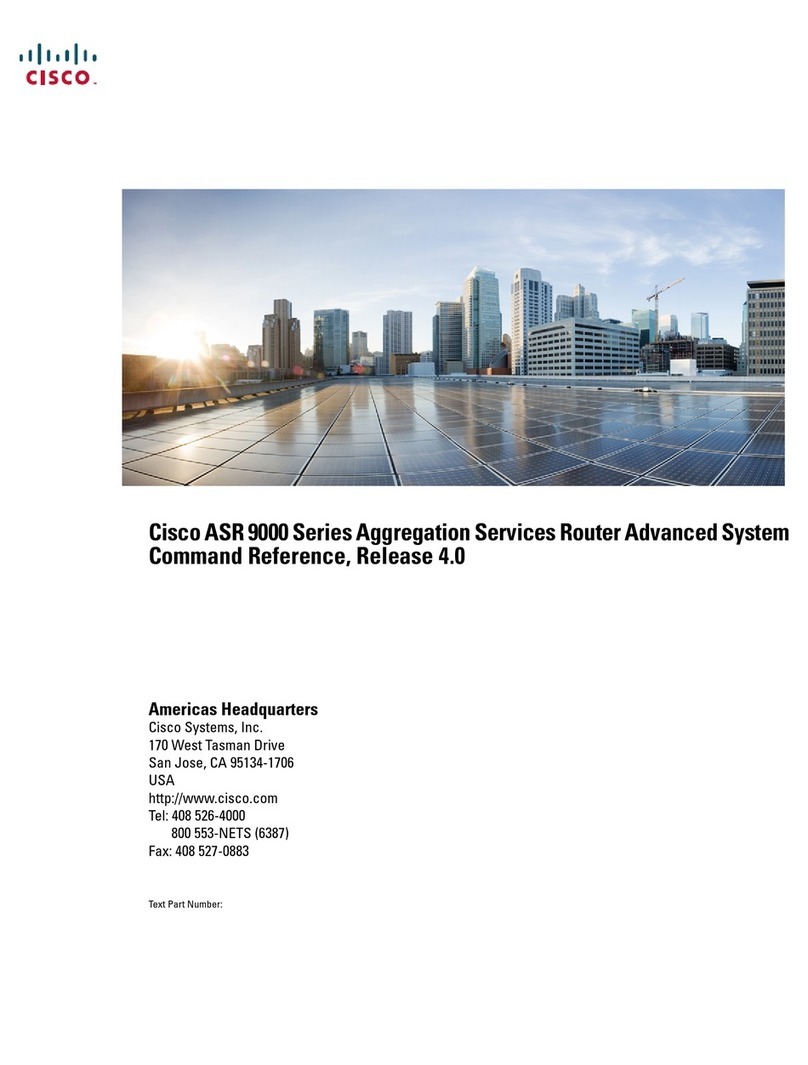
Cisco
Cisco ASR 9000 Series Installation manual
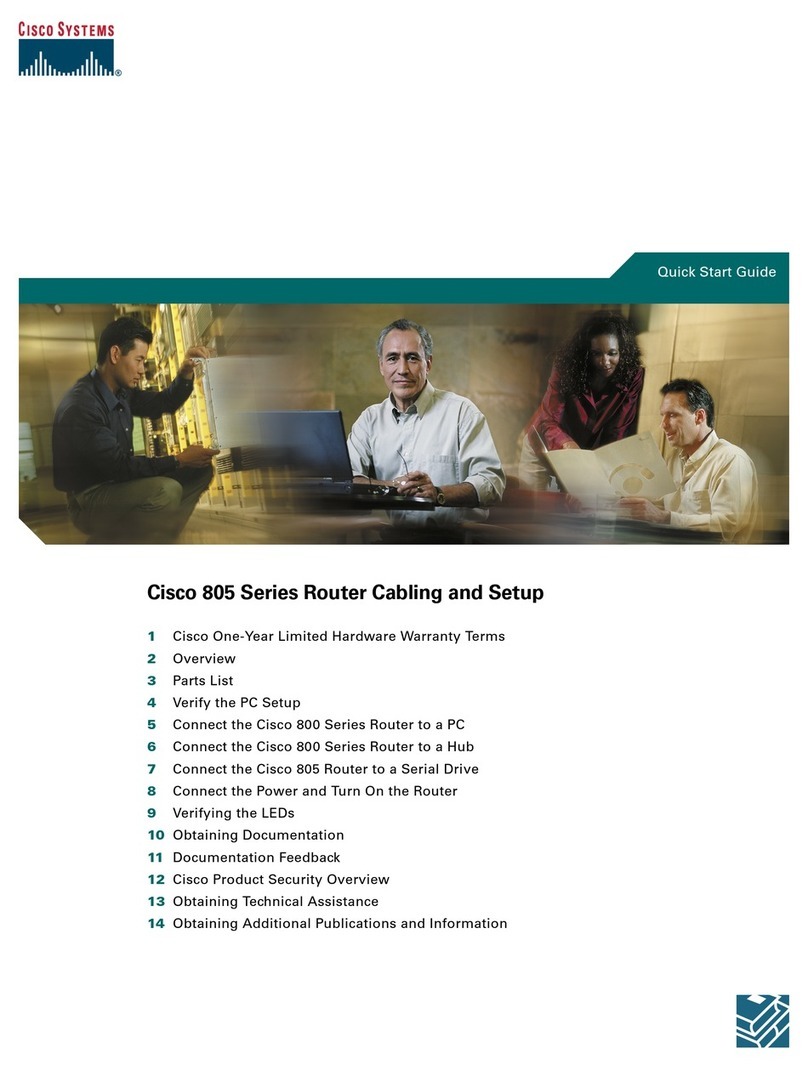
Cisco
Cisco 805 Series User manual
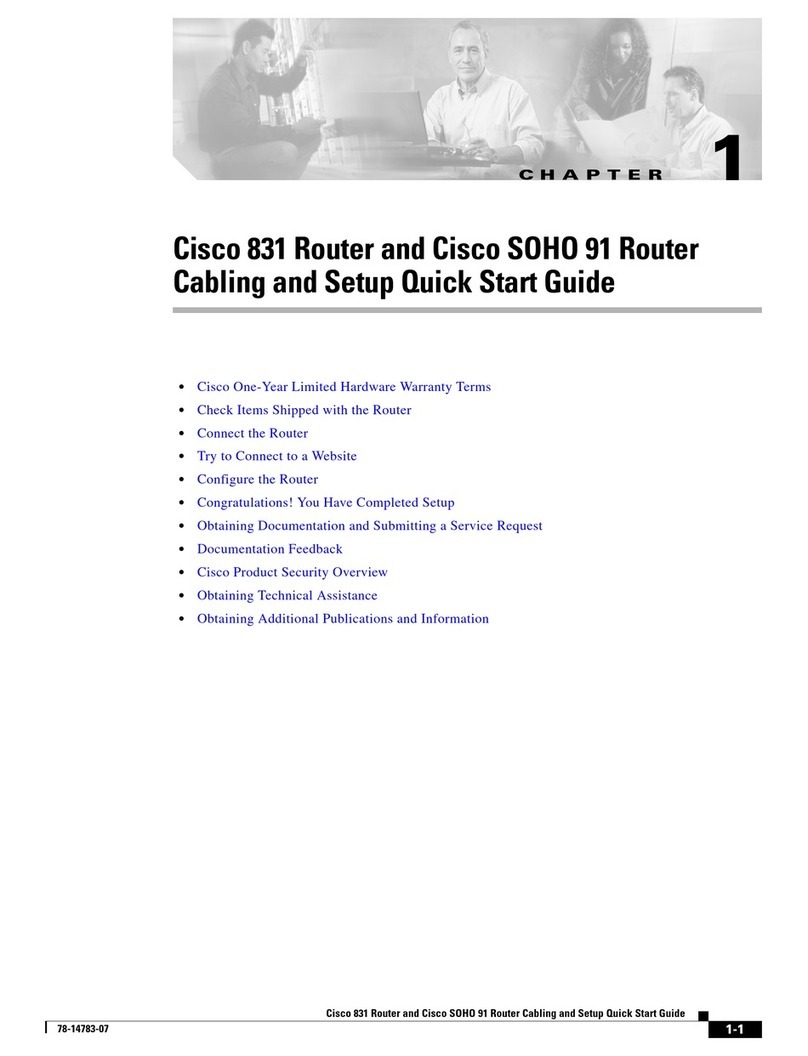
Cisco
Cisco SOHO 91 User manual
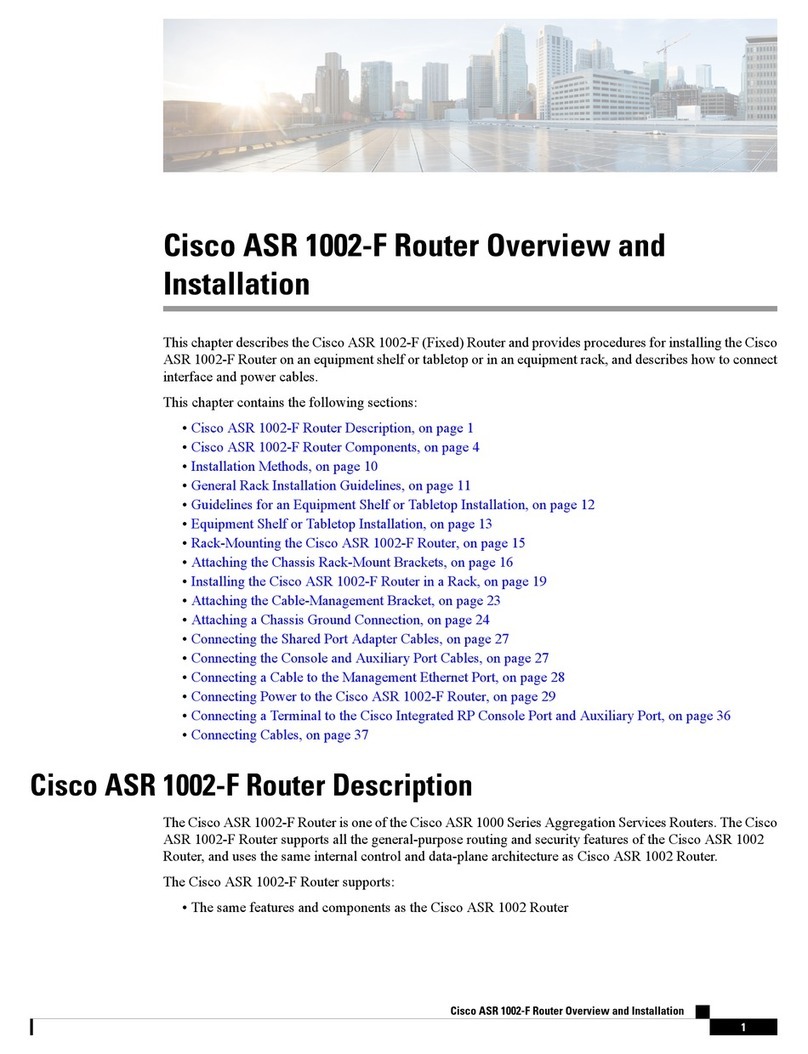
Cisco
Cisco ASR 1002-F Installation guide
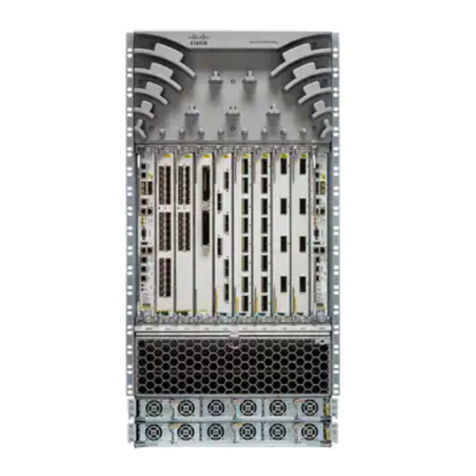
Cisco
Cisco ASR 9000 Serie User manual

Cisco
Cisco Aironet 350 Series User manual

Cisco
Cisco RVS4000 - Gigabit Security Router User manual

Cisco
Cisco vEdge 5000 User manual
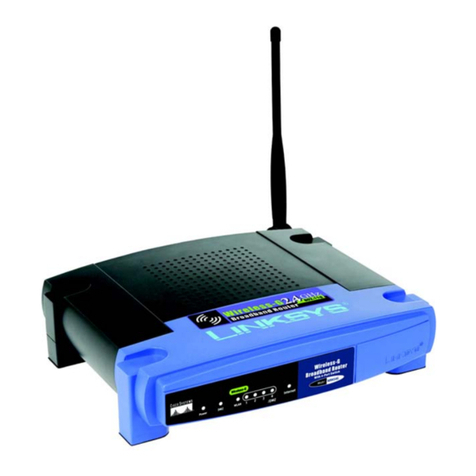
Cisco
Cisco Linksys WRK54G User manual
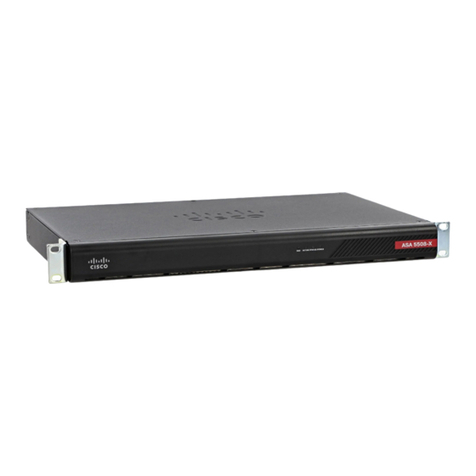
Cisco
Cisco ASA 5508-X User manual

Cisco
Cisco cBR Manual
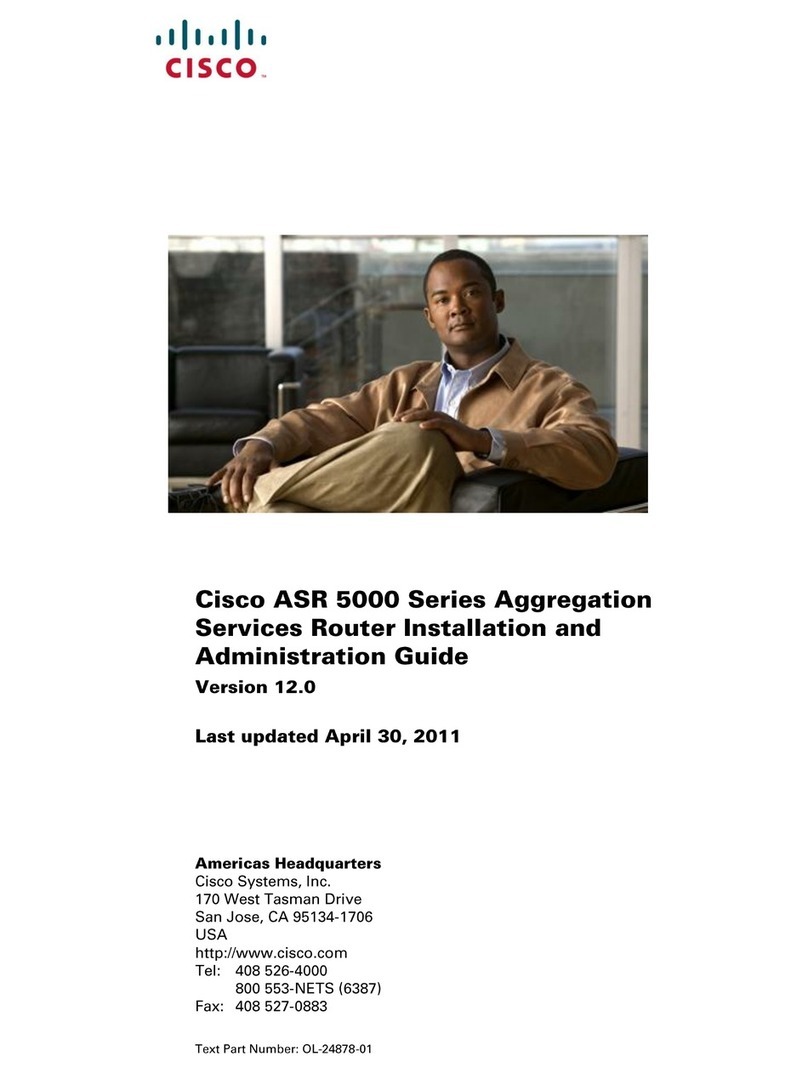
Cisco
Cisco ASR 5000 Series Instruction Manual
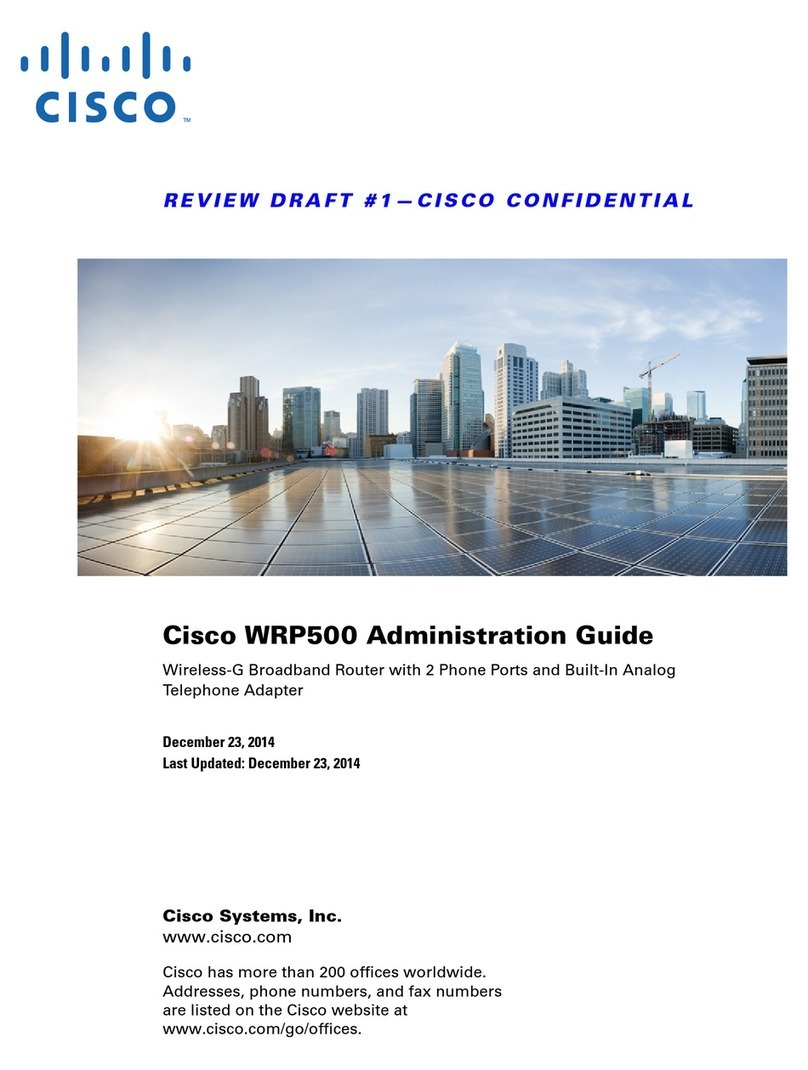
Cisco
Cisco WRP500 Instruction Manual
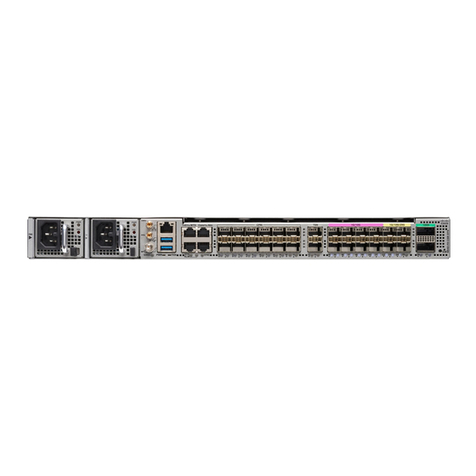
Cisco
Cisco N540-FH-CSR-SYS Manual
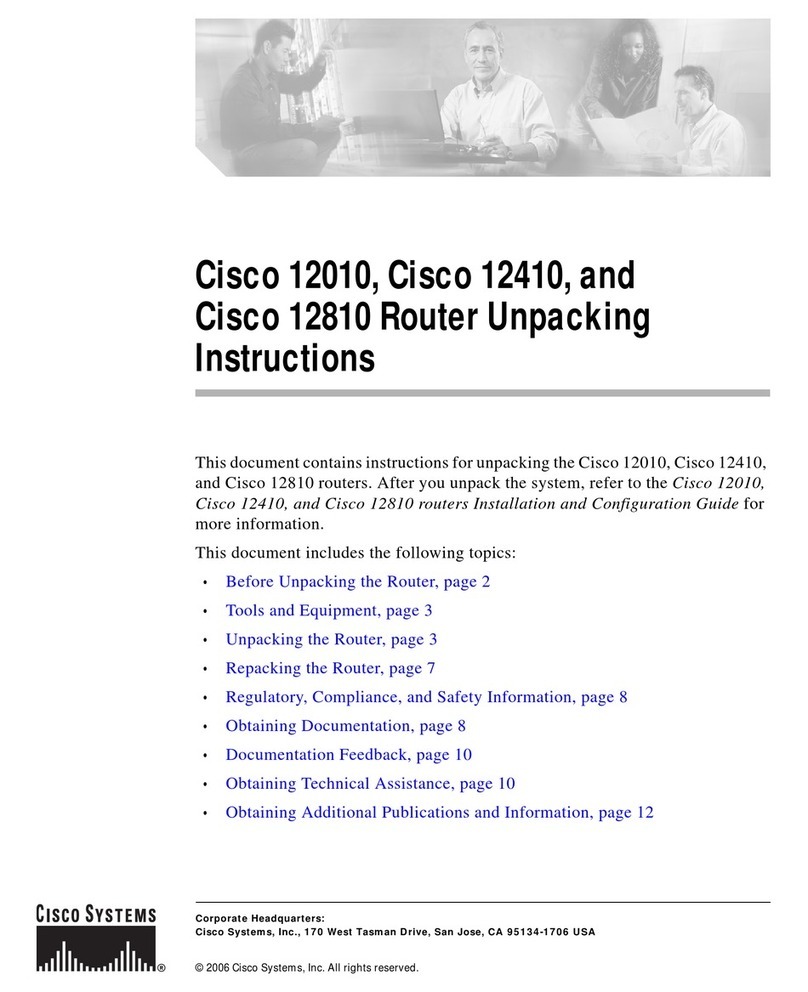
Cisco
Cisco 12010 series User manual
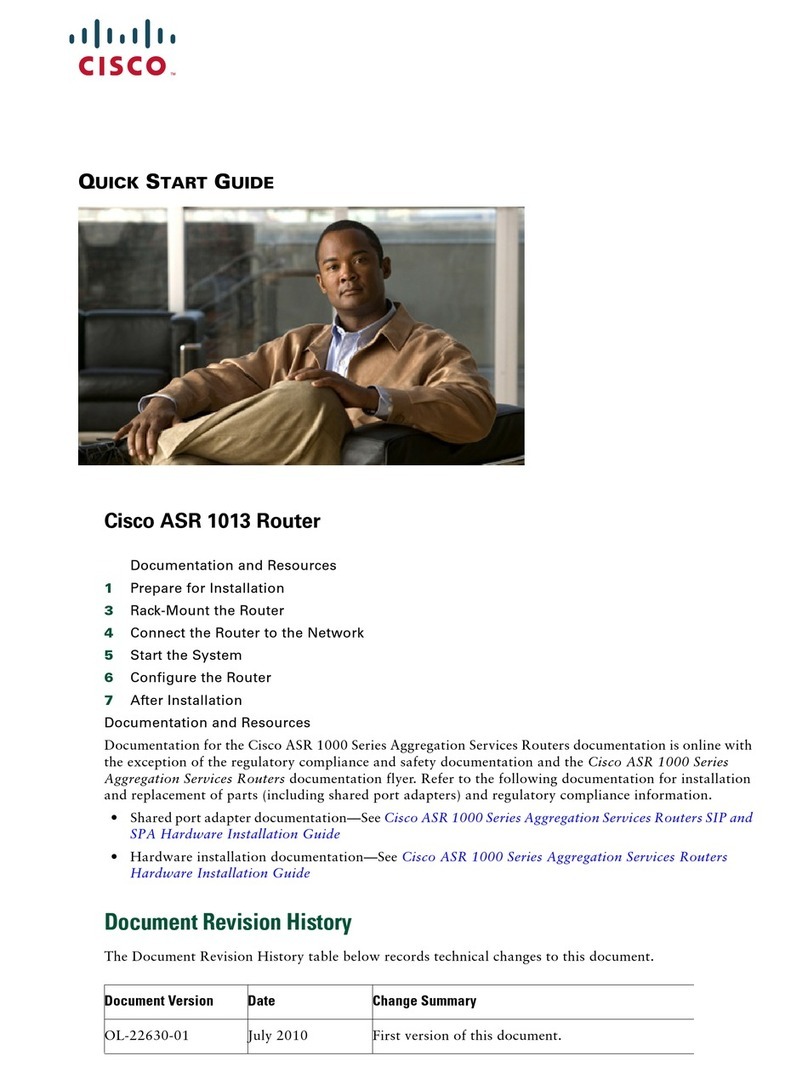
Cisco
Cisco ASR 1013 User manual

Cisco
Cisco ASR 9000 Series User manual
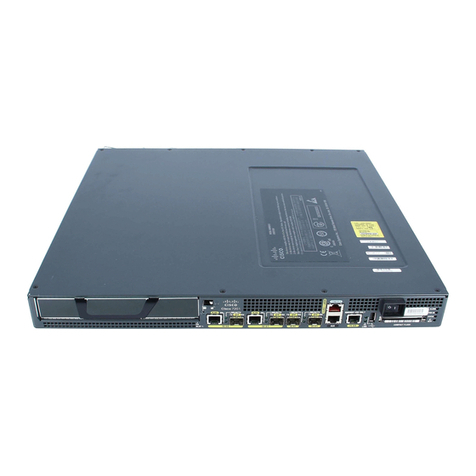
Cisco
Cisco CISCO7201 Operator's manual
Popular Network Router manuals by other brands

TRENDnet
TRENDnet TEW-435BRM - 54MBPS 802.11G Adsl Firewall M Quick installation guide

Siemens
Siemens SIMOTICS CONNECT 400 manual

Alfa Network
Alfa Network ADS-R02 Specifications

Barracuda Networks
Barracuda Networks Link Balancer quick start guide

ZyXEL Communications
ZyXEL Communications ES-2024PWR Support notes

HPE
HPE FlexNetwork 5510 HI Series Openflow configuration guide
